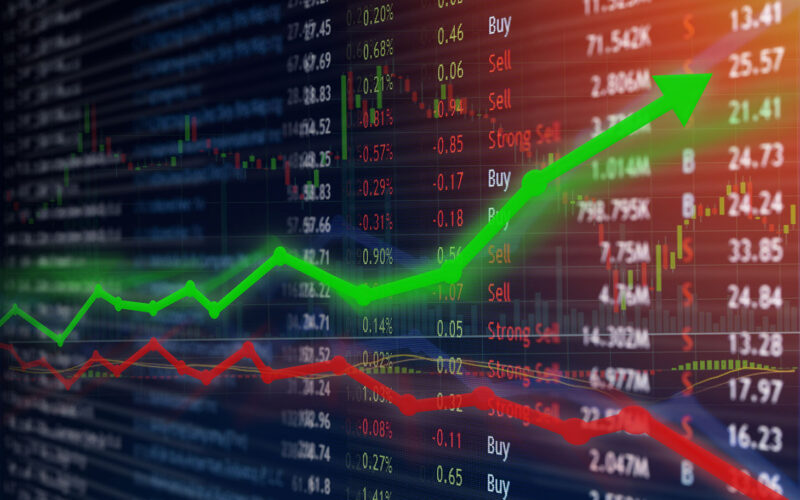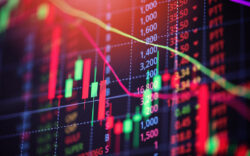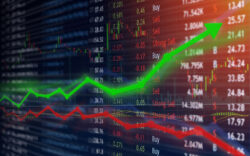In today’s issue:
- Has something broken? We don’t know yet.
- Central banks have suborned the world’s capital markets
- Stay in Maximum Safety Mode
Editor’s note: Bill Bonner reflects on recent chaos in the markets below. It’s a good reminder that now is a good a time to protect your wealth. But how? John Butler is sharing his key steps to do just that. It’s well worth taking a look. Now, back over to Bill…
The first bomb went off two weeks ago. Then, on Monday last week, came the big ka-boom. Al Jazeera:
Japanese stocks have recorded their biggest losses since October 1987, spurred by concerns the United States’ economy may be in weaker health than previously thought. The Nikkei share average was down 10% or 3,595 points to 32,314 in the early afternoon, its lowest in months.
Those poor long-suffering Japanese investors. After the crash in 1990, they waited for an entire generation to get their money back. And then, after enjoying it for only a few months… boom… another blow-up.
But wait… could something like that happen in the US?
Nah… no chance… right? Markets Insider:
Dow plunges more than 1,000 points as global stock rout deepens on recession
US stocks crashed on Monday [5 August], with the Nasdaq shedding nearly 6% as the global market rout that kicked off late last week accelerated.
Since Thursday, the S&P 500 is down about 7% while the Nasdaq 100 is down 9%.
The losses accelerated on Monday after Japan’s stock market experienced its worst decline since the Black Monday crash in 1987, falling 12%.
After the explosions, the financial press went to the scene. As if investigating a terrorist attack, the newshounds sniffed around for whom to blame. They followed up on leads. They talked to witnesses. But they misunderstood almost everything.
In the first place, they acted as if lower prices were worse than higher ones. They imagined hopeless investors leaping out of windows or putting guns to their heads. But most people are not long stocks… they are short. That is, most people don’t own them. And the less of the world’s wealth is controlled by stock market gamblers, the better off (relatively) most people are.
Besides, stock prices are primarily information… they tell investors where their capital can be most fruitfully employed. The important thing is not that prices be high or low… but that they be honest.
Central banks, however, have suborned the world’s capital markets… making them lie about how much they are really worth. As a result, trillions of dollars were misallocated.
In the tech sector alone, the Magnificent Seven more than doubled in the last year. Nvidia rose to more than $3 trillion dollars — more than any company the world has ever seen. Its CEO, Jensen Huang, became a celebrity. At conferences, women unbuttoned their shirts so he could autograph their bras.
And now, Mr. Market seems to be ready to teach them all a lesson.
Looking for a culprit, the financial press pointed at the Bank of Japan which had raised interest rates two weeks ago. This was a ‘policy error,’ said the analysts.
It was not. It was just a desperate move to protect the yen… after decades of ‘policy errors’ in the other direction. Lending far too much money, at rates that were far too low… for far too long… leaves Japan with far too much debt.
Analysts last week were also blaming the Fed. It should have announced a rate cut the week before, they say. And now, they’re already suggesting another ‘policy error’ — an emergency rate cut.
So, let’s pause… and get our bearings.
Primary trend reversal
The Fed left its key lending rate below zero for more than ten years. This ‘policy error’ had caused all kinds of mischief… most prominently, it led to extremely high asset prices and a mountain of debt. Then, the Primary Trend reversed course, in two moves, one in July 2020, the other in January 2022. After four decades, both stock and bond markets turned around.
Bonds sold off. Stocks sold off too… then dilly dallied around… with nominal prices rising, but no increase in real, inflation-adjusted, values.
In 2022, the Fed was forced to raise rates to fight the inflation caused by cheap credit and stimmy checks. But higher rates are a death sentence to an over-stretched debtor.
Our guess, back in 2022, was that the Fed would stick with its inflation fighting ‘until something breaks.’ Then, in a panic, it would cut rates again.
Has something broken? We don’t know yet.
But when it does, the Fed will have only two choices: inflate or die.
Either it returns to inflating the economy with more under-priced credit money. Or, it allows the bubble economy to die. Either way, we will stay in Maximum Safety Mode until we can buy quality companies at fair prices.
Regards,
![]()
Bill Bonner
Fortune & Freedom




